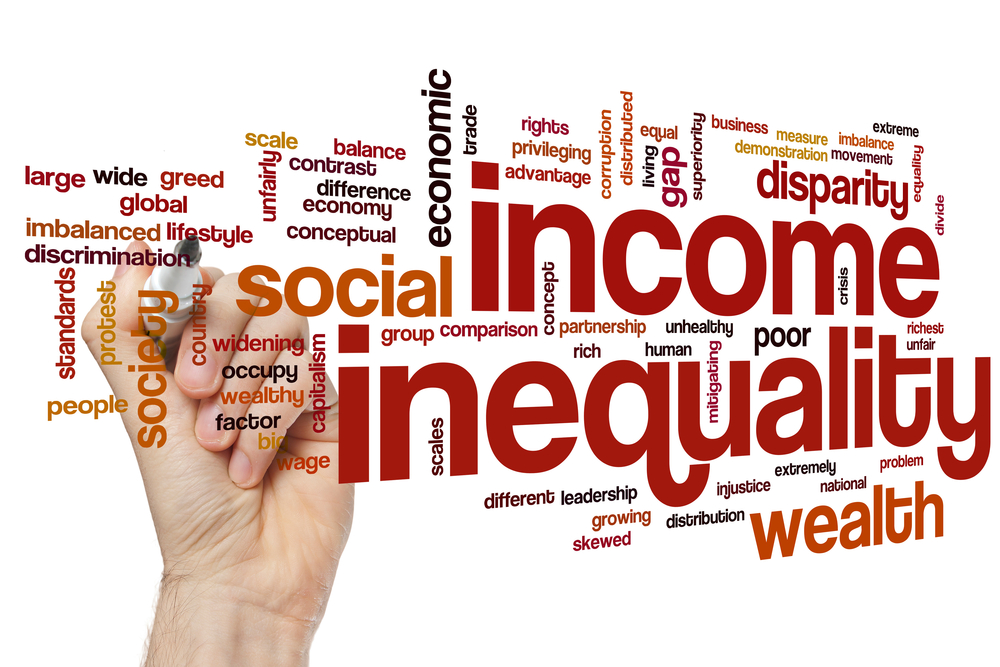China’s Financial Inequality Gap Widens

Please note that we are not authorised to provide any investment advice. The content on this page is for information purposes only.
Rising income and wealth inequality (measured by the Gini coefficient) have marked the last three decades of China’s remarkable economic transition from a centrally planned economy to an increasingly market-oriented one. When analysing the causes of China’s inequality, researchers frequently invoke rapid trade integration, technology, human capital differences and social security systems, but very little has been said about the role of monetary policy and the banking system.
Rising income and wealth inequality (measured by the Gini coefficient) have marked the last three decades of China’s remarkable economic transition from a centrally planned economy to an increasingly market-oriented one. When analysing the causes of China’s inequality, researchers frequently invoke rapid trade integration, technology, human capital differences and social security systems, but very little has been said about the role of monetary policy and the banking system.
‘Financialisation’ — the rising leverage of financial and non-financial firms and the growing influence of financial elites — could help conceptualise and analyse the evolution of China’s political (and consequently real) economy. While the study of the relationship between financialisation and inequality is in its early stages, it is still relevant to China. There is a clear correlation between the growth of private debt relative to GDP and rising wealth inequality. The top 10 percent of China’s population have increased their share of total wealth from less than 40 percent in the early 2000s, to almost 65 percent by 2010.
China’s economic model gears heavily toward export and fixed investment. High levels of liquidity slosh around the economy hoping to boost GDP, used as a crucial metric in assessing Party cadres’ performance. The enormous level of financial deepening (which morphed into financialisation) meshes with China’s banking system, monetary policy and decentralised authoritarianism — institutional patterns that underpin rising financialisation and wealth inequality in China.
China has a hybrid banking system that serves both political and commercial goals. It relies on collateral instead of on profitability, distorting capital allocation in favour of large assets holders instead of efficient holders. This often produces the problem of overcapacity and ‘survival of the fattest’. It is not surprising that this creates inequality through rent seeking. Certain agents receive special treatment and have preferential access to newly created credit. Those agents are mostly well-connected insiders in the state sector.
The basis of China’s monetary policy — characterised by financial repression — is on the government setting interest rates below the inflation rate most of the time. Financial repression acts as a redistributive machine, transferring purchasing power from savers to debtors. However, China’s financial repression also covers its exchange rate policy by forcibly sterilising foreign exchange. This means that only sellers of foreign exchange receive liquidity, but the whole economy shoulders externalities from excessive leverage. Unfortunately, this gives rise to a coalition of interest groups with incentives aligned to the increased role of credit in China’s economy. This feature of China’s monetary policy can help analyse the financial origins of wealth inequality.
The staggering levels of wealth inequality serve as evidence for the disparities generated by the ongoing financialisation of China’s economy. The national Gini coefficient for wealth inequality spiked from 0.54 to 0.76 during 2002–10.
In his study of the change, Li Shi of Beijing Normal University decomposed the contribution of different sectors to wealth inequality in 2010. He related 97 percent of the increase in wealth inequality to changes in the values of finance and housing (11 and 86 percent respectively). This suggests a positive feedback loop between financialisation-wealth inequality-financialisation, evidenced by the burgeoning levels of indebtedness and wealth inequality. More wealth begets more debt due to rising price of collateral. In addition, the clash between an overly elastic supply of credit and location-specific demand for housing in China’s first and second tier cities put the financialisation of housing at the epicentre of China’s wealth inequality.
China has gradually moved toward resembling a market economy in many important traits, including exposing itself to the whims of financial capitalism. However, China’s private debt growth is diverging from its GDP growth, and wealth inequality is increasing as a natural consequence. This combustible mix may put China at risk of serious financial crisis. It should pose a major concern for any serious policymaker.
In order to avoid a bumpy ride in the coming years, China needs to wean itself off its heavy dependence on credit to achieve GDP growth. It needs to address its inequality problem seriously. China should start by reforming its banking systems and eliminating financial repression distortions. Although Deng Xiaoping famously said ‘let some get rich first’, it is now time for China to embrace letting the others get rich as well.
The financial origins of China’s rising inequality is republished with permission from East Asia Forum




